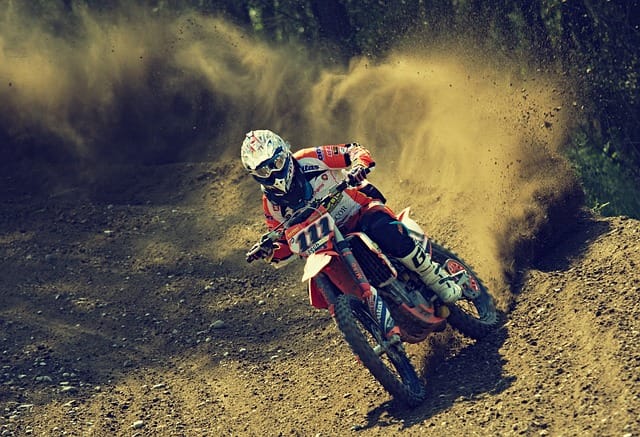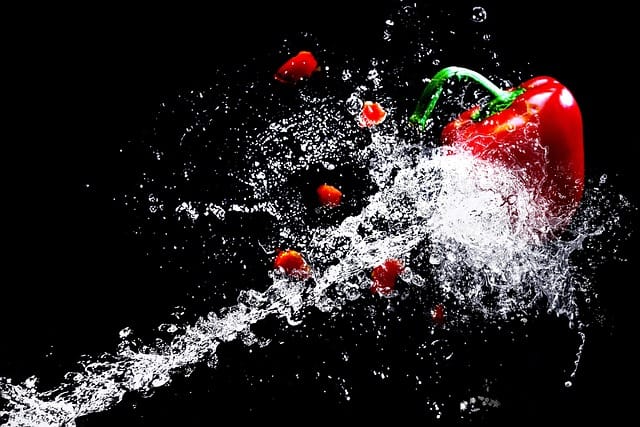High-speed photography is an exhilarating form of photography that captures rapid motion in stunning detail. By utilizing fast shutter speeds, photographers can freeze moments that the naked eye often misses, from a water droplet’s splash to a bird in flight. In this blog post, we will delve into the fascinating world of high-speed photography, discussing techniques, equipment, and tips to help you create breathtaking images.
As you explore the intricacies of fast shutter speed photos, you’ll learn about the importance of selecting the right settings to achieve stunning results. Whether you’re a seasoned photographer or just starting, understanding how to utilize high shutter speed photography will elevate your skills and enhance your portfolio. Expect to gain insights into the best cameras for high-speed photography and how to experiment with techniques like high-speed water drop photography.
Understanding High-Speed Photography
What is High-Speed Photography?
High-speed photography refers to capturing images at very high shutter speeds, typically faster than 1/1000th of a second. This technique allows photographers to freeze fast-moving subjects and create images that reveal intricate details often lost to the human eye. The need for speed in photography has led to innovative techniques and equipment that empower photographers to capture motion in a way that transcends everyday visual experiences.
The Importance of Fast Shutter Speeds
Utilizing fast shutter speeds is crucial in high-speed photography. The shutter speed determines how long the camera’s sensor is exposed to light, affecting how motion is captured. For instance, a high shutter speed photo can freeze a drop of water as it hits a surface, creating a crystal-clear image of the splash. The critical role of shutter speed cannot be overstated; it not only impacts the exposure but also defines the very essence of the motion you are attempting to capture.
To explore the technical aspects of shutter speeds, visit Photography Life.
Techniques for Capturing High-Speed Photos
Selecting the Right Camera Settings
When engaging in high-speed photography, understanding your camera settings is essential. Here are some key settings to consider:
Shutter Speed: To capture fast-moving subjects, set your shutter speed to at least 1/1000th of a second. For extreme motion, you may need even faster speeds, such as 1/4000th of a second or higher. Experimenting with shutter speed is essential to mastering the art of high-speed photography.
Aperture: A wider aperture (lower f-number) allows more light in, which is beneficial for high-speed shots, especially in low-light conditions. A fast lens with an aperture of f/2.8 or wider is ideal for this type of photography.
ISO: Increase your ISO setting to ensure your camera sensor captures enough light without motion blur. However, be mindful of noise at higher ISO levels. Finding the right balance between ISO and shutter speed is crucial for achieving sharp images.
Utilizing Burst Mode
Most modern cameras offer a burst mode feature, allowing you to take multiple shots in quick succession. This is particularly useful for capturing fast action, ensuring you don’t miss the perfect moment. When photographing events like sports or wildlife, using burst mode can dramatically increase your chances of getting that perfect shot. The ability to shoot several frames per second means you can capture various expressions, movements, and actions that happen in the blink of an eye.
To learn more about burst mode, check out Canon USA.
Experimenting with Lighting
Proper lighting is essential for high-speed photography. Using flash or external lighting can help freeze motion effectively, especially in low-light situations. This technique is especially beneficial in high-speed water photography, where lighting enhances the clarity of splashes. Flash photography can create dramatic effects, allowing for the illumination of a subject while capturing the motion.
Using off-camera flash can help you control the direction and intensity of light, creating a more dynamic scene. High-speed sync (HSS) with flash allows you to use faster shutter speeds than the camera’s maximum sync speed, further enhancing your ability to capture fast-moving subjects in well-lit conditions.
Equipment for High-Speed Photography
Best Cameras for High-Speed Photography
When considering the best camera for high-speed photography, look for features such as a fast burst mode and excellent autofocus capabilities. Here are a few recommendations:
Canon EOS R5: Known for its impressive frame rate and low-light performance, this mirrorless camera is excellent for high-speed shots. The R5 offers a continuous shooting speed of up to 20 frames per second, making it ideal for fast action photography.
Nikon Z6 II: Offers a fast shooting speed and robust autofocus system, making it a great choice for action photography. With a continuous shooting speed of 14 frames per second, this camera can capture a variety of fast-moving subjects with precision.
Sony A9 II: Renowned for its lightning-fast autofocus and continuous shooting capabilities, ideal for capturing high-speed moments. With an impressive 20 frames per second burst rate, the A9 II is a favorite among sports and wildlife photographers.
Fujifilm X-T4: This APS-C mirrorless camera features fast autofocus and continuous shooting speeds up to 15 frames per second. It’s a versatile option for photographers looking for a compact and lightweight camera.
Olympus OM-D E-M1 Mark III: A micro four-thirds camera that boasts a high-speed shooting mode and excellent in-body image stabilization, making it suitable for handheld high-speed photography.
For a more comprehensive guide, visit Nikon.
Lenses for Fast Speed Photography
Choosing the right lens is just as important as selecting a good camera. Fast prime lenses with wide apertures are excellent for capturing high-speed images with minimal motion blur.
Canon EF 50mm f/1.8: A versatile lens that performs well in various conditions, especially for fast shutter photography. Its affordability and excellent image quality make it a go-to choice for many photographers.
Nikon AF-S 35mm f/1.8: Known for its sharpness and clarity, this lens is ideal for capturing quick movements. The wide aperture allows for beautiful background blur while keeping fast-moving subjects in focus.
Sigma 24-70mm f/2.8: This standard zoom lens offers versatility for high-speed photography, allowing you to capture a variety of subjects without changing lenses. Its constant f/2.8 aperture provides excellent low-light performance.
Tamron 70-200mm f/2.8: This telephoto lens is perfect for wildlife and sports photography, providing the reach necessary to capture fast-moving subjects from a distance while maintaining image quality.
Sony FE 85mm f/1.4: A prime lens known for its stunning bokeh and sharpness, ideal for portraits and action shots in low-light conditions.
Advanced Techniques in High-Speed Photography
High-Speed Water Drop Photography
One of the most exciting aspects of high-speed photography is capturing water droplets in motion. Techniques for high-speed water drop photography include using precise timing and flash to freeze the action.
To experiment with this technique, set your camera to a fast shutter speed and use a flash to illuminate the scene. Position a dropper above a container and trigger the shutter just as the droplet falls. This method can yield stunning results, showing intricate patterns created by the splash.
Tips for High-Speed Water Drop Photography:
- Setup a Controlled Environment: Use a dark room or space to reduce ambient light and control reflections, enhancing the details of the splash.
- Use a Flash Trigger: An external flash with a trigger can ensure you capture the exact moment the droplet hits the surface.
- Create a Consistent Droplet Size: Use a consistent dropper to ensure each droplet is the same size, which helps in achieving uniform results.
High-Speed Photography with Ilford Delta 3200
For those interested in film photography, Ilford Delta 3200 is an excellent choice for high-speed photography in low-light situations. This film has a high ISO rating, allowing you to capture fast-moving subjects without sacrificing quality.
You can explore Ilford Delta 3200 sample photos online to get inspiration and see the kind of detail that can be achieved with this film. For more about Ilford films, visit Ilford Photo.
Shooting Tips with Ilford Delta 3200:
- Experiment with Development Times: Because this film is rated at ISO 3200, you may want to experiment with different development times to see how it affects your final images.
- Use Push Processing: If you’re shooting in very low light, consider push processing your film to enhance the contrast and grain, adding to the film’s character.
Night Photography Techniques
Engaging in Ilford Delta 3200 night photography can yield exceptional results. Using this high-speed film allows you to capture the nightlife and motion of urban settings without relying heavily on artificial light. The key is to stabilize your camera and utilize long exposures effectively.
Techniques for Night Photography:
- Stabilize Your Camera: Use a tripod to prevent camera shake, especially for longer exposures.
- Use a Remote Shutter Release: This will help eliminate any potential vibrations that may occur when you press the shutter button.
- Experiment with Light Sources: Utilize streetlights, neon signs, and other available light sources to enhance your compositions.
For more techniques, check out Fstoppers.
High-Speed Photography in Sports
Capturing the dynamic action of sports can be thrilling with high-speed photography. The unpredictability of sports makes it essential to be prepared for quick reflexes. Here are a few tips for getting the best shots:
- Anticipate the Action: Understanding the game can help you predict movements and capture key moments.
- Use Continuous Autofocus: Many cameras have an autofocus mode designed for moving subjects. This mode continuously adjusts focus as the subject moves, allowing for sharp images.
- Be Mindful of Backgrounds: Ensure your backgrounds don’t distract from the action. A clean, uncluttered background can significantly enhance your subject.
Creative Applications of High-Speed Photography
High-speed photography isn’t just limited to sports or wildlife. Creative applications abound, and the potential for artistic expression is vast. Here are some innovative ways to utilize this technique:
- Exploring Motion in Everyday Life: Capture mundane moments like a dog shaking off water or a child jumping into a pool, revealing beauty in everyday actions.
- Abstract Art: Use high-speed photography to create abstract images. For example, capturing the moment of a bursting balloon can produce stunning color splashes that make for striking art.
- Theatrical Performances: Use high-speed photography to capture dance or theater performances, highlighting the grace and energy of the performers.
Troubleshooting Common Issues
Motion Blur
Despite the advantages of high-speed photography, motion blur can still occur if the shutter speed is not fast enough. To avoid this, always assess your subject’s speed and adjust your shutter speed accordingly.
Lighting Conditions
Poor lighting can hinder your ability to capture high-speed photos effectively. Experimenting with different lighting setups, such as using flashes or reflectors, can significantly improve your results.
Safety Precautions
When engaging in high-speed photography, particularly with elements such as water or any other potentially hazardous materials (like breaking glass), always prioritize safety. Use appropriate gear, such as goggles or gloves, if necessary, and ensure your shooting environment is safe to avoid accidents.
Conclusion
In conclusion, high-speed photography offers a unique and thrilling way to capture moments that are typically unseen. By mastering fast shutter speeds, photographers can create stunning images that showcase motion in exquisite detail. Whether you’re experimenting with high-speed water drop photography or exploring the capabilities of various cameras and films like Ilford Delta 3200, the possibilities are endless.
This genre of photography not only enhances your skills but also provides an opportunity to express your creativity. So grab your camera, set your shutter speed, and start capturing the world in motion!






